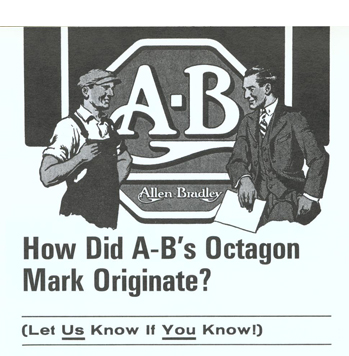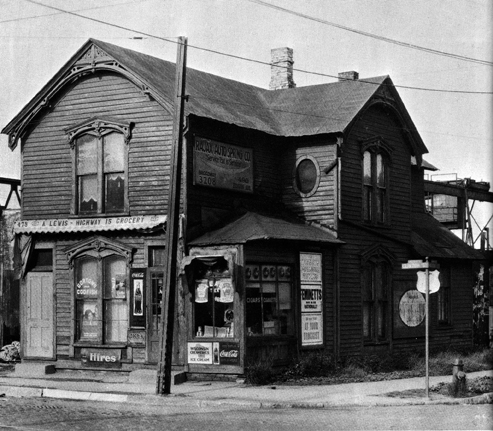The article stated that the original trademark registration “indicates first use in interstate commerce as October 1, 1923.” The company magazine’s original name was Gossip, but according to the article, it had “suspended publication for two years” in the early 1920s so there were no stories about why the octagon was chosen.
Lynn Matthias, who joined the company in 1927 and later became vice president of research, was contacted for the piece, but the article reported he could only “guess that the mark can probably be traced back to the fertile mind of Adolph Fensholt, founder of A-B’s long-time advertising agency, since ‘that’s where most of that kind of thing originated.’”
Fensholt Advertising of Chicago still existed in 1982, so the magazine contacted the agency and interviewed the employee with the longest tenure—Helen Kallam, who had 28 years in at the time. She recalled that “someone once told me the octagon was patterned after a clock.”
The article continued, “That seemed a likely lead, until we determined that the first A-B clock, forerunner to our current pacesetter, did not appear upon the Milwaukee skyline until the 1930s.”
Dan Stupek, who is still doing business as a marketer associated with what remains of Fensholt Advertising, told me that Kallam retired out west. After more inquiries I was able to talk with her; she’s now in her eighties but had no recollection of the article that quoted her or the history of the octagon. More than 25 years have passed since she last thought about it so that is not surprising.
Her recollection in 1982 that it had something to do with a clock, however, rings true; Mathias’ recollection about Fensholt might, too. Stupek said that before Fensholt formed his own agency in 1922, he worked for Allen-Bradley as an electrical engineer and a technical writer. It might be a coincidence that about one year after he left the company the basic trademark that has endured ever since was chosen, or maybe once he was on his own he impressed upon the Bradleys the need for a simple symbol and presented options, including the octagon.
I also visited the Rockwell Automation library, which has a copy of virtually every Gossip and Contact the company published and paged through many. After reviewing photographs of the growth of the Allen-Bradley complex of buildings, I concluded that contrary to the Contact article about the octagon no clock was present until the neon-accented beauty was unveiled in 1951.
Before it moved into its first, built-to-order facility at the corner of Greenfield Avenue and South First Street in August 1928, the company occupied quarters that had been designed for other purposes and were adapted by the growing manufacturer.
Its original location was above Gordon’s Codfish, a delicatessen. Lynde later wrote about it pointedly, “I was never in a place that smelled so villainously as it did there in the winter time.”
The new structure that Allen-Bradley occupied on the eve of the Great Depression sported the first of many towers that would adorn company buildings but only the words Allen-Bradley and the octagonal logo appeared on it. No clock. When I spoke with Wojtkowski about this she said the 1982 article’s assertion about the first clock might simply have been wrong. She also confirmed my recollection that the article produced no leads as to what inspired the octagon’s use in the trademark.

1982 Contact
Graphic for story in 1982 Contact.
Courtesy of Rockwell Automation, Inc.

Allen-Bradley’s first location was in
this building above Gordon’s Codfish.
Courtesy of Rockwell Automation, Inc.